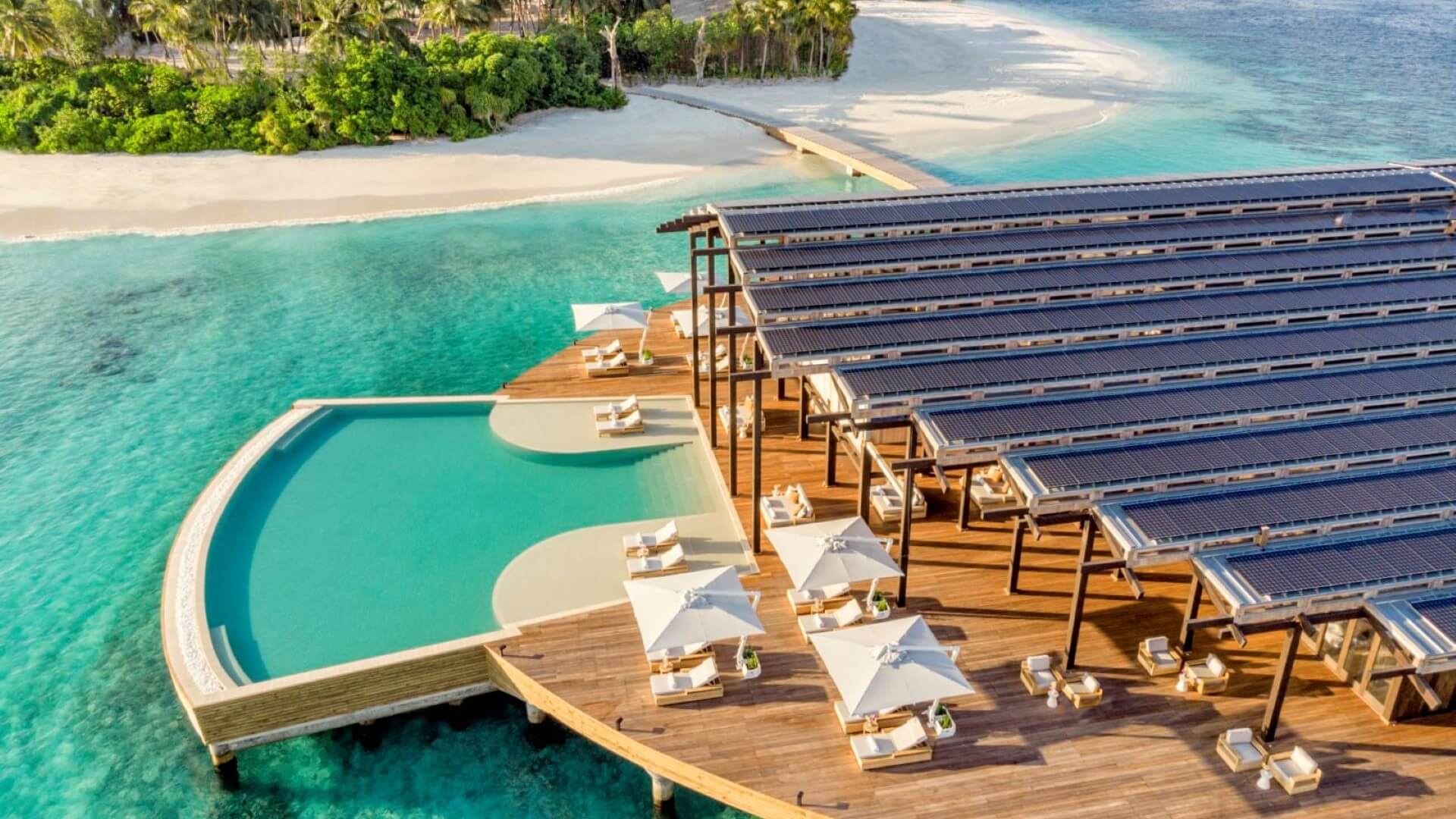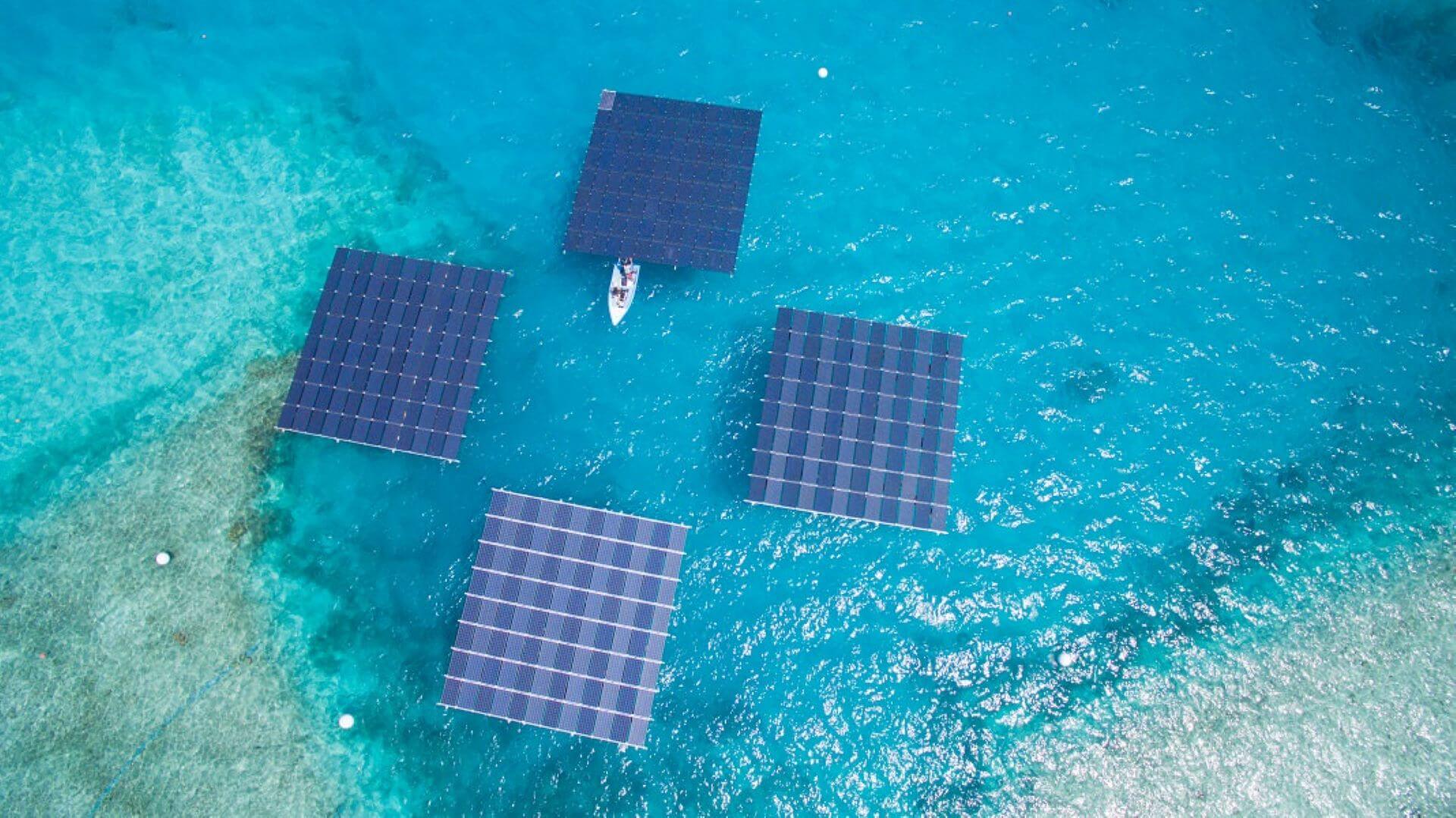UPDATED 1 Sept: The EI library in London is temporarily closed to the public, as a precautionary measure in light of the ongoing COVID-19 situation. The Knowledge Service will still be answering email queries via email , or via live chats during working hours (09:15-17:00 GMT). Our e-library is always open for members here: eLibrary , for full-text access to over 200 e-books and millions of articles. Thank you for your patience.
New Energy World™
New Energy World™ embraces the whole energy industry as it connects and converges to address the decarbonisation challenge. It covers progress being made across the industry, from the dynamics under way to reduce emissions in oil and gas, through improvements to the efficiency of energy conversion and use, to cutting-edge initiatives in renewable and low-carbon technologies.
Financing green power projects in the tropics
21/6/2023
8 min read
Feature
Small Island Developments (SIDs) – in the Indian Ocean and Pacific – typically faced an uphill struggle to raise finance for green energy projects. But prospects are improving, reports Selwyn Parker.
When the Maldives, a string of 185 islands in the Indian Ocean, launched its ambitious Aspire solar development project in 2014, only four lenders were prepared to risk their money, worthy though the scheme was.
Six years later this had all changed. In 2020, no less than 25 bidders lined up to support the next phase in the islands’ solarisation project that is part of a goal of becoming net zero by 2030. By 2022 it changed again as the financing became more sophisticated and the participants gained more experience.
‘Buoyed by the risk mitigation structure, there was a record 63 bids in 2022,’ reports the World Bank. Lenders were piling in. In one tranche of funding, the World Bank’s $12.4mn was leveraged to $140mn by other investors.
The results are showing up in cheaper energy for the Maldives’ population of 550,000 – which was one of the original purposes of the project. ‘Greater private investment has driven down costs,’ notes the World Bank. ‘For example, the power purchase agreement (PPA) price – the purchase price per unit of electricity that a power company agrees to with a solar power plant – decreased over these years from 21 cents/unit to a record low of 9.8 cents/unit of electricity, significantly below the current price of imported fossil energy.’
So, the Maldives gets cleaner and cheaper energy, and the solar project also slashes economic costs. Instead of subsidising power for consumers, the government hopes to save about $30mn/y on imports of fossil fuels. According to the World Bank estimates, over the next 25 years the economy will benefit to the tune of $750mn.
In World Bank terms, the Maldives is a SID, and there are a lot of them that can benefit from properly funded solar projects. The SIDs are home to 65 million people and most of them spend much more heavily than they have to on the provision of energy.
For example, the Maldives’ energy budget is equivalent to roughly 10% of gross domestic product (GDP), and mostly goes on diesel.
But is there enough sun for the SIDs to harvest?
In World Bank terms, the Maldives is a SID, and there are a lot of them that can benefit from properly funded solar projects. The SIDs are home to 65 million people and most of them spend much more heavily than they have to on the provision of energy.
Mapping solar potential
A German-based company called Solargis has built up the world’s first map of a country’s solar potential. ‘At Solargis our primary focus lies in assessing the solar yield potential/risks within the weather system,’ says a spokesperson. Thus, Solargis can predict how much photovoltaic (PV) energy a nation will be able to harvest year in, year out. In this way investors have a measure of certainty.
Armed with this kind of reliable and detailed information, the World Bank has embarked on an initiative called Solar Lighthouse covering others SIDs, notably the Seychelles and Mauritius. Many island nations crippled by energy costs are watching the initiative closely.
But if the sun’s there, where’s the money?
 A solar-powered resort in the Maldives
A solar-powered resort in the Maldives
Photo: Kudadoo Aerial
Funnelling funding
The transformation to renewable energy, including solar, will not come cheap. According to the International Renewable Energy Agency (IRENA), some SIDs need an investment of around $5.9bn annually to achieve their renewable energy targets by 2030. As the Maldives has shown, the answer lies in international funds, provided they get the agreed return. In the era of ESG (environment, social and governance) there is clearly ample sustainable financing for worthy, planet-saving projects.
One example is the $1bn ‘catalytic fund’ just established by the IKEA and Rockefeller Foundations that will be devoted to the scale-up of distributable renewable energy. Although this is not just for SIDs, they are likely to get more than their fair share. In a new tactic, some of this funding will be poured into local mini-grids, off-grids and floating PV farms, rather than into bigger-scale, centralised power plants. According to the Energy Compact, as the fund is called, the results will come faster from smaller-scale projects.
‘Mini grids can economically supply electricity to people in areas that the main grid is unlikely to reach soon,’ explains the World Bank. ‘Mini grids can be quickly deployed and are increasingly price-competitive against traditional sources of energy.’
Most importantly, smaller-scale infrastructure can attract private financing, such as from Jamaica’s green bonds. Essentially, this is a virtuous form of fixed-income securities. Green bonds are increasingly on the table for the right kind of project. In 2022, Jamaica became the first Caribbean nation to issue one by listing it on the Jamaica Stock Exchange, where international investors can buy into the instrument.
Foreign money is essential if island nations such as Jamaica are to hit their energy targets. As the Jamaican government points out: ‘The public purse does not have the capacity to supply the large sums that are going to be required for us to really implement these.’
However, third-party finance comes with a price. Most of it is interest-bearing, and investors expect that interest to be paid and the project completed, preferably on time. In 2014 the Cook Islands, a collection of 14 remote islands spread over 2mn km2 of the Pacific Ocean, signed up to $34.71mn in loans that were to fund a solar energy project, including battery storage, that would see all the islands, including the capital of Rarotonga, being renewably powered by 2020.
In part because of COVID-19 triggered delays, the deadline was pushed back to mid-2023. Some progress has been made, with solar PV infrastructure built on five small islands that is saving nearly $7mn that would normally be spent on fossil fuels. However, the project has slowed, and the main island of Rarotonga is way behind schedule. In May 2023 there was a fire on the solar panels at Rarotonga airport, the only significant installation in the main island. Requests to the authorities by New Energy World for details on progress have not received a response.
The project is desperately needed. With a population of about 17,500, the government spends over $18mn/y on imports of fuel – mainly diesel. That may not seem like a lot but it’s equivalent to nearly 5% of GDP.
The benefits of renewable power cannot be measured in a purely financial sense. Until recently, residents of the most remote islands had no reliable electricity. If the ship couldn’t turn up, for instance in the cyclone season, they went without. But now they can power computers, televisions and mobile phones, and some are making products for sale in Rarotonga.

A floating solar farm in the Maldives
Photo: Solar Sea
A major Pacific solar initiative
The Pacific region is not commonly recognised for strong governance, but lenders will be closely watching an ambitious new solar initiative that was unveiled in February 2023. Entitled Solar Head of State, it is funded mainly by the Indian government and two branches of the United Nations (UN). The grand plan calls for the solarisation of a vast swathe of islands in the Pacific, including Micronesia, Kiribati, Palau, Nauru, the Marshall Islands, Solomon Islands, Tonga, Tuvalu, Timor-Leste and Vanuatu.
Like the Cook Islands, most of these nations have huge fuel bills relative to their GDP. Fiji, for instance, pays about $440mn/y on fossil fuels, or over 8% of GDP, to provide heating for its 106 inhabited islands.
However, the failure rate of projects of all kinds in the Pacific is dismayingly high, particularly for energy. As the region’s main sustainable lender, Asia Development Bank (ADB), pointed out in 2021: ‘In most Pacific [SIDs] electricity services are provided by state-owned, vertically integrated natural monopolies, with sector regulatory decisions driven by political imperatives, often on an ad hoc and unpredictable basis. Regulatory and governance regimes of this nature, especially in capital-constrained environments, do not provide for efficient management of scarce resources, and often limit investor confidence.’
In short, inefficiency is rife, and these state-run utilities have to raise their game if they want to attract lending.
Encouragement for third-party investors
However, as the Maldives has found, there’s money on the table for good borrowers. The ADB has $100mn in active loans, but this isn’t enough, and the Bank wants to encourage third-party investors who can provide partial risk guarantees, direct loans and letters of credit that collectively reduce the short-term liquidity risks of utilities.
Provided they meet their obligations, the time looks ripe for solar power in small island communities. A report by the Secretariat of the Pacific Regional Development that protects and manages environmental issues, notes: ‘Costs for renewable power generation continue to decline, with most renewable electricity-generating options, particularly wind and solar, less expensive than fossil fuel options.’
Citing an increase in the use of solar power across the Pacific, the International Finance Corporation (IFC), a member of the World Bank, is in full agreement. In a 2021 report, the IFC argues that: ‘[The] Pacific offers an unparalleled opportunity for remote, energy challenged economies to rapidly adopt renewables.’
This is where the ADB comes in. In 2021, the Bank had $22mn in active loans for solar power projects out of a total $100mn invested in renewable energy. But that’s just small change – a $700mn facility has been approved that will finance probably scores of mini grids, including floating solar farms, under one umbrella called the Pacific Renewable Energy Investment Facility.
As the ADB explains, the idea is to end the fragmentation that has bedevilled individual projects. ‘By grouping projects into a single facility, ADB and its partners are more capable of sharing knowledge and resources and in turn processing assistance packages more efficiently.’
So far, so good. Already, costs are coming down on these projects, productivity is up and so is the number of projects, with more in the pipeline through to 2024.
